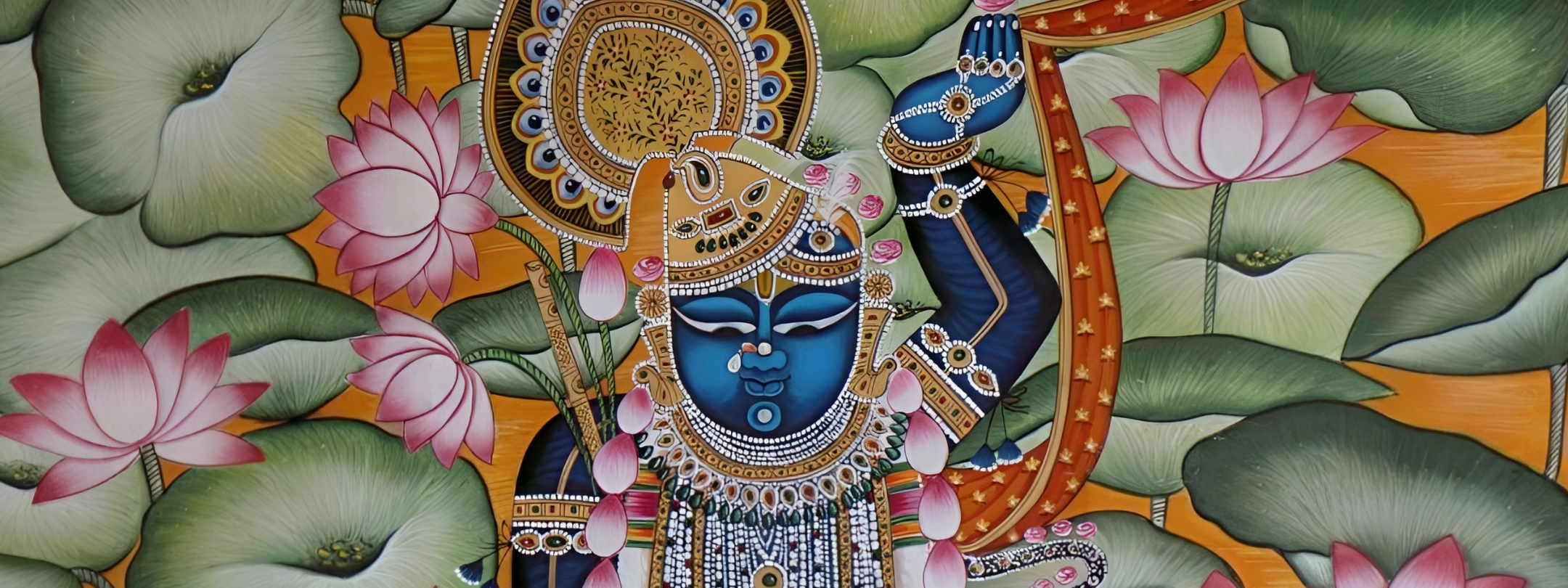-
A Shrine for Shrinathji
Pichwai, Nathdwara School, RajasthanUnknown7 x 11 Inches

-
The Lotus eyed one
Traditional Pichwai, RajasthanUnknown33 x 57 Inches

-
Daan Leela Dakni
Deccan Pichwai, RajasthanUnknown45 x 73 Inches
 Sold out
Sold out -
Gopis enraptured by Lord Krishna
Deccan Pichwai, RajasthanUnknown35 x 56 Inches

-
24 Swaroop of Shrinathji
Traditional Pichwai Art, RajasthanDinesh Soni48 x 60 Inches

-
Krishna Leela
Traditional Pichwai Art, RajasthanDinesh Soni36 x 60 In.Regular price Rs. 400,000Regular priceUnit price per

-
Gilded Gopashtami scene
Traditional Pichwai Art, RajasthanDinesh Soni36 x 48 In.
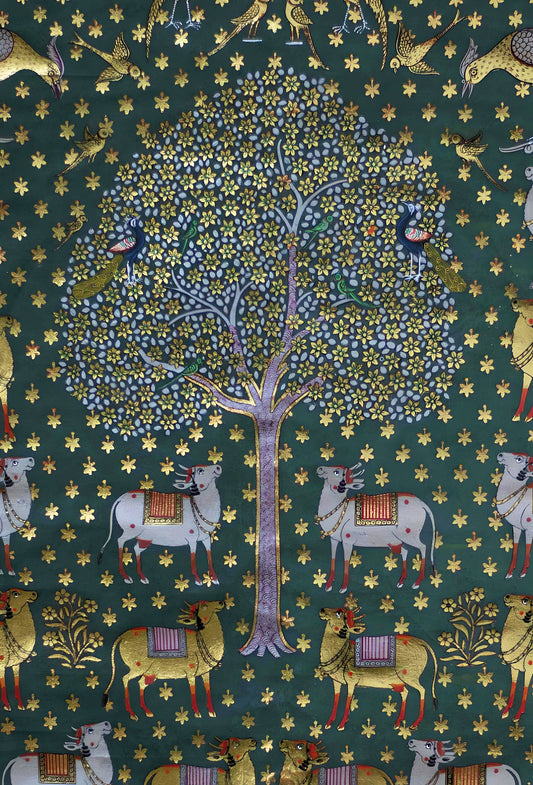
-
Naag Daman
Traditional Pichwai Art, RajasthanDinesh Soni24 x 36 In.Regular price Rs. 100,000Regular priceUnit price per

-
Jal Kamal
Traditional Pichwai Art, RajasthanDinesh Soni2.25 x 3.25 Ft.Regular price Rs. 135,000Regular priceUnit price per

-
Gathering of the cowherds
Traditional Pichwai Art, RajasthanDinesh Soni39 x 48 In.Regular price Rs. 430,000Regular priceUnit price per

-
Sharad Purnima & Gopis
Traditional Pichwai Art, RajasthanDinesh Soni48 x 60 In.Regular price Rs. 290,000Regular priceUnit price per

-
Sandhya Aarti Darshan ( Antique )
Traditional Pichwai Painting, RajasthanMahesh Vishnoi18 x 24 In.Regular price Rs. 130,000Regular priceUnit price per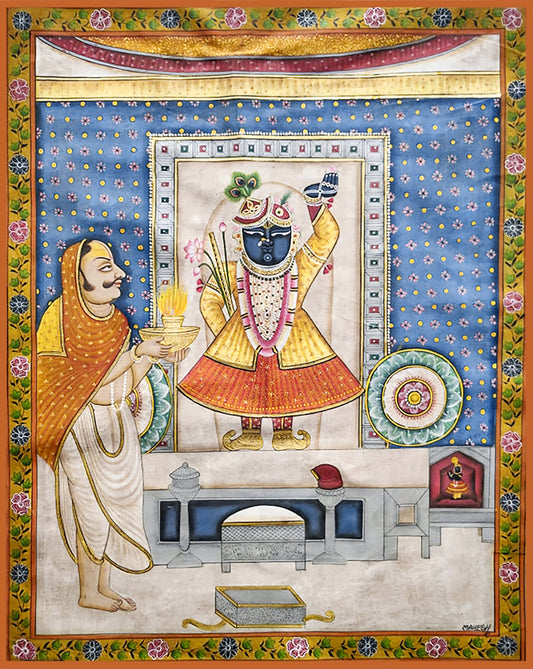

-
Dakni Style Sharad Purnima Raas
Traditional Pichwai Painting, RajasthanMahesh Vishnoi24 x 36 In.Regular price Rs. 196,000Regular priceUnit price per
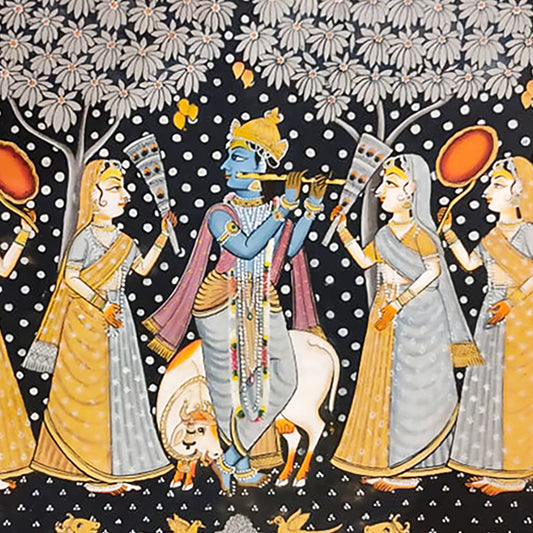
-
The Most Holy- Kadam Ka Ped (Set of 2)
Traditional Pichwai Painting, RajasthanMahesh Vishnoi20 x 18 In.Regular price Rs. 85,000Regular priceUnit price per
-
Geometric Pichwai
Traditional Pichwai Painting, RajasthanMahesh Vishnoi24 x 24 In.Regular price Rs. 115,000Regular priceUnit price per

-
Abstraction of Shrinathji
Traditional Pichwai Painting, RajasthanMahesh Vishnoi18 x 18 In.Regular price Rs. 55,000Regular priceUnit price per

-
Kamal Talai Pichwai
Traditional Pichwai PaintingMahesh Vishnoi24 x 36 In.Regular price Rs. 140,000Regular priceUnit price per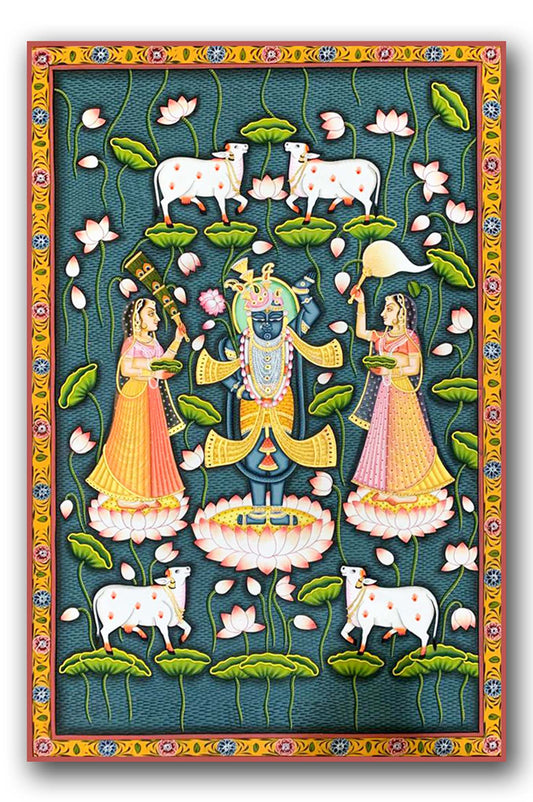
-
Aarti Darshan (Vintage)
Traditional Pichwai PaintingMahesh Vishnoi24 x 36 In.Regular price Rs. 140,000Regular priceUnit price per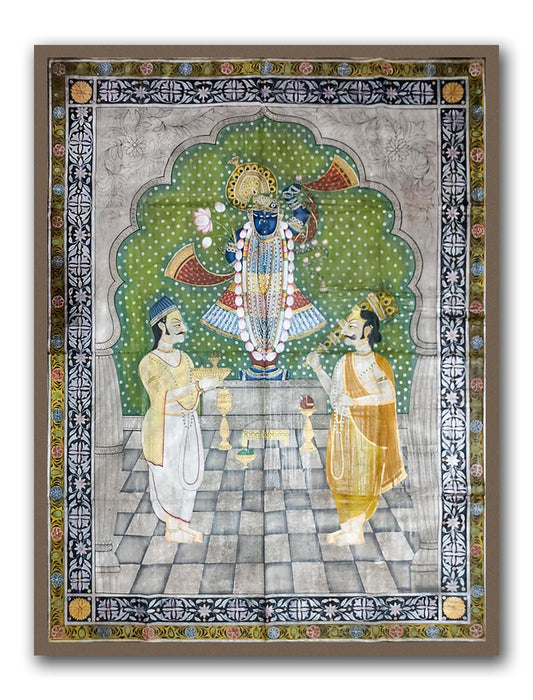


.png?v=180585433461421961291732270581)
